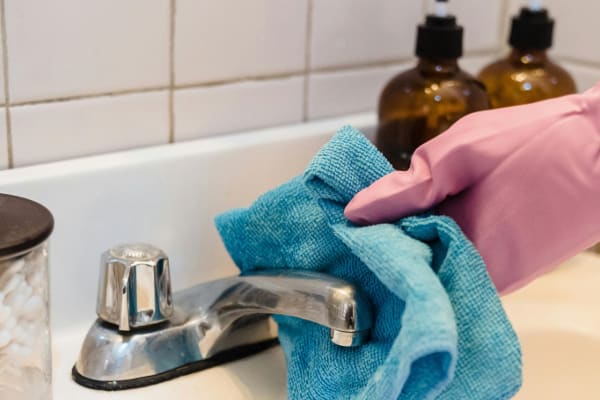Mould is a common, and often frustrating problem for homeowners. When it creeps into your property, whether in your bathroom, basement, or on your walls, the instinct is to reach for a quick solution – for many, this is usually a shop-bought mould remediation.
However, a significant number of these products contain bleach, often listed as sodium hypochlorite as the active ingredient. But while bleach-based cleaners may promise to wipe out mould, the reality is a bit more complicated. In fact, using bleach to tackle mould may do more harm than good…
Find out why:
Bleach: A Surface-Level Solution
Bleach has a well-earned reputation as a potent disinfectant, but when it comes to mould treatment, it’s only effective in certain situations. Bleach can indeed kill some types of surface mould on non-porous materials like tiles or glass – but not all moulds are the same. Bleach struggles to eliminate various species of mould, meaning you could be left with lingering spores that continue to grow after treatment.
Bleach is largely ineffective on porous surfaces like wood, drywall, or fabric. These materials absorb moisture, allowing mould to root deeply beneath the surface. It doesn’t penetrate deeply enough to eradicate the problem at its source which means that the mould is likely to resurface, potentially even more aggressively than before!
The Root Cause: Moisture
One of the most critical points to understand about mould is that it’s not just the mould itself that’s the problem—it's the moisture that allows it to thrive. Mould grows and spreads in damp, humid conditions, so simply wiping it away with bleach does nothing to address the underlying issue. If the excess moisture remains unaddressed, mould will inevitably return, regardless of how many times you treat it with bleach.
Effective mould remediation requires tackling the source of excessive moisture. This could involve fixing leaks, improving ventilation or using a dehumidifier to reduce humidity levels in your home. Without addressing these root causes, you’re simply treating the symptoms of a larger problem, not the problem itself.
Potential Risks of Bleach Use
Using bleach to clean mould can also introduce a new set of risks. For one, bleach is a harsh chemical that can cause damage to various surfaces in your home. It can strip colour, weaken materials and cause deterioration over time – which nobody wants. Always test bleach on an inconspicuous area first, especially on coloured or delicate surfaces to make sure it won’t cause damage.
Bleach can also pose health risks, especially in poorly ventilated areas. The fumes can be irritating to the eyes, skin, and respiratory system, making it particularly hazardous for those with asthma, allergies or other respiratory conditions.
Lastly, bleach can give a false sense of security. When mould is visible on the surface, it’s easy to believe that the problem is resolved once the black or green patches are gone. However, as we’ve discussed, if the mould is deeply rooted in a porous surface, or if moisture issues aren’t addressed, the problem will persist.
How To Get Rid of Mould: A Better Approach
Given the limitations and risks associated with using bleach for mould removal, it’s often better to seek out alternative solutions. Specialised mould remediation products that don’t rely on bleach can be more effective, especially on porous surfaces.
For a more comprehensive solution you can rely on, consider booking a professional mould removal service with Action Insurance Repair. Our approach allows us to address both visible and hidden mould through advanced treatments that provide long-term protection for your home.
If you’re facing mould in your home, don’t hesitate to contact us on 01234 655333.

